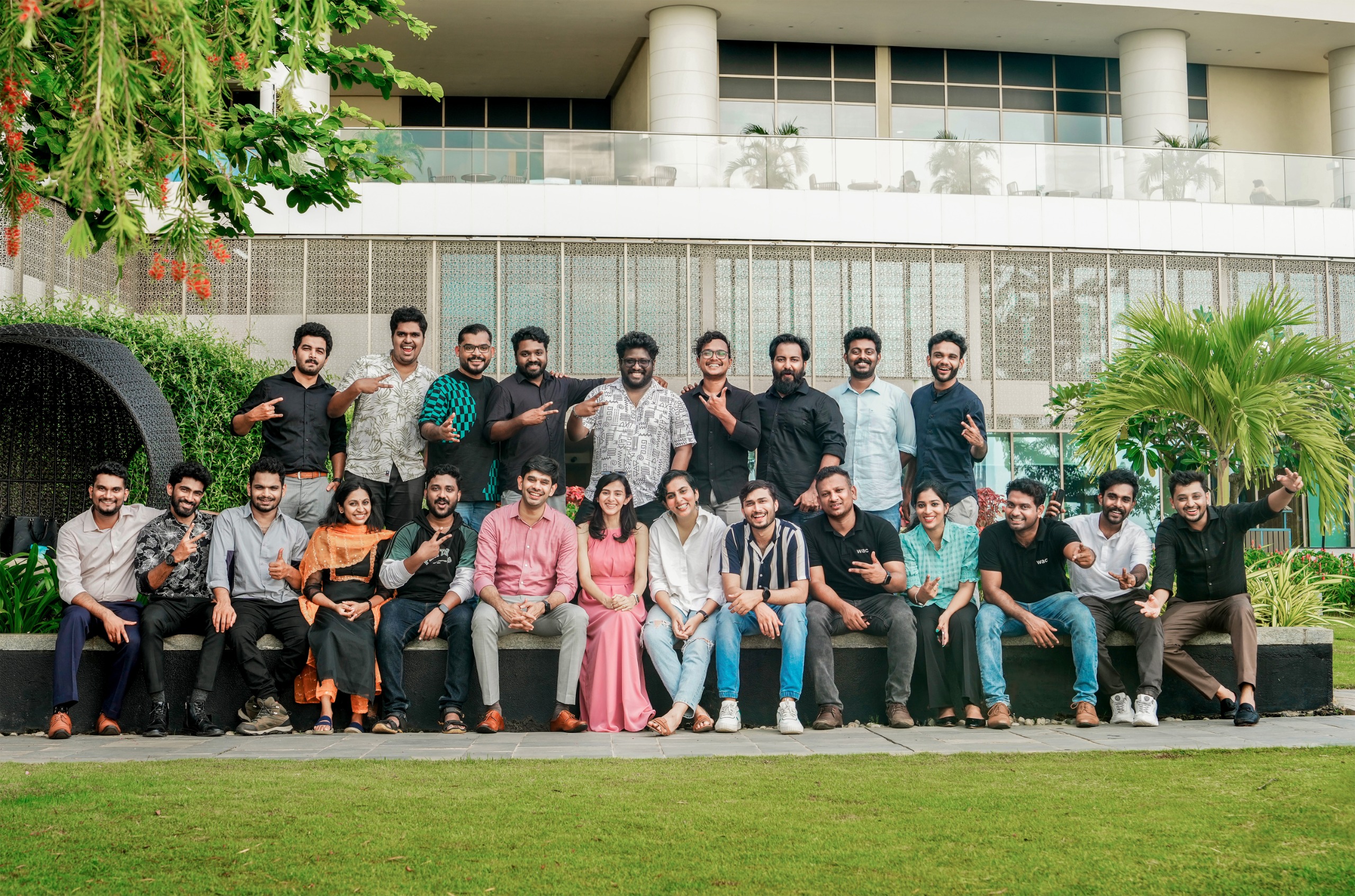12 Major Workplace Trends in 2024

Staying in line with emerging workplace trends is crucial for any organisation to remain attuned to the ever-evolving professional sphere. As they navigate the business transformation, companies must be proactive and vigilant in shaping how their teams collaborate and thrive.
From embracing diversity and inclusion to discovering work innovations, recognising workplace trends plays a major role in enabling businesses to create resilient workplaces. Every organisation needs to create a welcoming environment through new initiatives that take employee engagement to a greater level. A successful workplace should leverage innovation, promote self-reliance at every phase, and uncover hidden talents to bring out the best in each employee.
It is important to foster employee well-being with benefits that cater to the young generations, encourage feedback, and support growth through intensive training. Through a people-centred environment and adopting the latest trends, you can embrace diversity and let employees feel fulfilled and valued. Let’s explore the workplace trends that can help you get inspired to develop an exceptional work culture and unveil the strategies that determine business success.
Major Workplace Trends in 2024
1. Employee Engagement
Employee engagement defines the emotional connection an employee has with the organisation. It makes them connected to the organisation and persuades them to deliver their best. This changes with what happens in and across the world.
Companies should prioritise employee wellness through programmes other than the usual work, which includes fitness classes, employee engagement activities, mental health resources, etc. Organisations have been keenly introducing new initiatives to take employee engagement to the next level. 
By organising engagement and teaming up cross-functional groups, organisations can encourage a sense of leadership and collaboration. Nevertheless, another evolving trend is launching a platform where every employee can connect with brilliant minds across the organisation. These connections will build a strong foundation to ensure the overall development of the workforce.
2. Employee Retention, Upskilling and Talent Development
Companies are greatly advised to strategically emphasise upskilling, retention, and talent development initiatives. Since the impact of employee burnout is high, cultivating a workplace culture that focuses on retention is a prime aspect of resilience. In addition to a well-organised induction programme for new employees, leading organisations also conduct One-on-One meetings between employees and HR in regular intervals to ensure the well-being of employees and how they feel like working in the organisation.
Organisations should actively invest in strategies that retain quality talent, which acknowledges the relationship between employee satisfaction and business success. An in-depth commitment to talent development and upskilling not only boosts the proficiency of the workforce but also places the organisation as a forward-thinking and attractive employer.
By emphasising these aspects, businesses should address these challenges and prepare for the road ahead with a skilled, engaged and smart workforce that can confidently consider the evolving demands of the industry.
3. AI Reshaping Work
Artificial Intelligence, or simply put, AI, creates, not diminishes, workforce opportunities. Though anxieties about AI replacing jobs exist, we witness AI enhancing job opportunities. AI not only helps create the need for new positions but will also help employers minimise time to proficiency with advanced technologies and specialisations, emphasising the need to hire talent already specialised in these areas.
AI exceeds expectations through the preparation and analysis of large datasets with exactness. Whether it be recognising budgetary data or identifying peculiarities in therapeutic results, AI calculations can filter through the endless chunks of data to the most valuable insights.
By utilising machine learning calculations, AI frameworks can make data-specific decisions with high consistency and precision that overpower human capabilities. From understanding consumer behaviour to optimising supply chain operations, AI-driven decision-making can revolutionise trade across industries. AI can drive development and mechanisation by performing assignments that used to be time-consuming for people.
4. Flexibility
When employees experience a better work-life balance, they get time to spend time on non-work pursuits, which is ideal for both physical and mental health. A flexible work arrangement makes it less stressful for employees as well. Companies with cultural and ethnic diversity outperform less diverse businesses by as much as 36%.
Job Sharing is a flexible work arrangement where employees can share a full-time job making it easy to complete. Another aspect is the role of emotional intelligence in improving team flexibility. Show the team that you understand the real concerns and empathise with the employees. Check whether there’s something you can do to support them. For instance, could you offer additional training, or team them up with a confident colleague?
Office space is yet another element that reinforces certain ideas about how your business operates. Well-planned layouts with literal walls that space departments neatly are all possible work arrangements to encourage flexibility. To attract and keep the best prospects, companies need to adopt flexible workplaces where employees can work comfortably and contribute their best. This trend towards flexibility extends beyond traditional employment arrangements. Many companies are also exploring ways to incorporate independent contractors into their workforce, which requires understanding how to pay independent contractors effectively and compliantly across various jurisdictions.
5. Peer Recognition
Another trend that impacts organisations is the influence of matrixed, virtual and decentralised teams. A policy that encourages decentralisation should replace the one-on-one supervisor-to-employee relationship. The significance of team play and the importance of co-workers on employee happiness reinforces the need to let all employees give and earn recognition from anyone they engage with. According to the TINYpulse study, 89% of HR leaders believe that regular check-ins and peer feedback boost the organisational culture.

The ability for any employee to express appreciation and recognise other colleagues improves goodwill, collaboration, and teamwork. Recognition from leaders has a great impact. While HR managers consider this a key element for success, employees expressed that they feel far better when their peers recognise them. This is because peers know what you do on a day-to-day basis, so once they thank you for your efforts, it has a great and meaningful impact.
6. Clear Role Outlines by Managers
Clearing the fog is important; this means the team members should be sure of their responsibilities and have directions from management to ensure alignment. Role confusion could result in direction or conflict, which proves to be detrimental to the bottom line.
At the team level, managers do a great job laying out the roles and responsibilities of the employees. According to the Predictive Index survey, 60% of employees believe they have a world-class manager.
The five core managerial functions planning, staffing, organising, leading and controlling are here to stay as always, and the managers should be assigning clear employee role outlines to help them understand their duties and responsibilities clearly.
7. Teamwork in Employee Satisfaction

Employees, who rate co-workers and their relationships with co-workers highly, tend to be happy at work. This also means that the employees who were less happy, rated their relationship with their co-workers as low. Hence, if teamwork plays a greater role in employee happiness, what are the significant elements or traits people look for among their colleagues? Let’s dive deeper:
- Clear communication encourages sharing ideas, listening actively and collaborating effectively.
- Reliability involves being dependable, meeting deadlines, and following through on commitments.
- Respect focuses on valuing others’ opinions, being open-minded, and showing empathy.
- Positive problem-solving emphasises colleagues who approach challenges with a can-do spirit.
- Teamwork involves sharing credit, celebrating together, and offering help to others.
- Surrounding yourself with a team that follows strong work ethics will underline dedication to work and striving for excellence.
8. Co-worker Influence on Employee Happiness
The rating employees give on their relationship with their co-workers is highly related to how happy they are in their job environment. We often consider employee happiness and satisfaction to be manager-driven; however, as the workplace becomes more collaborative and bottom-up focused, the significance of co-worker relationships keeps growing.
As per the TINYpulse survey, the correlation of happiness with coworker rating is 23% higher than that with direct supervisor rating. The relationship with co-workers is a more critical factor than the relationship with the immediate supervisor when considering employee engagement. Every person in an organisation plays a vital role in the health and happiness of a distinct employee culture. Just as every football team member has a prime role in contributing to the success of the entire team, each member means a lot to the other team members.
This is one of the major workplace trends that demand that businesses have a constant feedback loop to understand how employees feel and where their strengths and weaknesses reside. Employee surveys held once a year fail to determine this. Hence, HR should lead the charge with management to perform, analyse, and take necessary action with changes in the process based on the responses they collect from the employee surveys.
9. Employee Suggestions for Innovation
Crowdsourcing is the biggest trend that impacts how societies and businesses operate. From creating logos to gathering knowledge to weather forecasting, and many other tasks, businesses have begun leveraging opportunities to encourage crowdsourcing. However, one of the most effective and most considered opportunities is crowdsourcing innovation and ideas from within our organisation.
The happiest employees provide the lowest feedback rate. Managers should be highly proactive along various channels or explore the knowledge, concerns, and suggestions of the workforce-especially the happiest employees who are less vocal with the suggestions.
Here are some steps you can take to fuel innovation within your organisation:
- Encourage employees to open idea sharing with brainstorming sessions;
- Empower employees and give them the ownership of their ideas;
- Ensure cross-functional collaboration for different perspectives;
- Build a physical workspace that sparks creativity;
- Create idea management platforms to facilitate idea sharing;
- Support innovative projects and initiatives;
- Offer incentives or rewards for innovative ideas.
10. Management Transparency for Employee Happiness
In a study of more than 40,000 employees by TINYpulse, management transparency was considered the most vital factor in improving employee happiness. By encouraging open communication, the top managers can keep team members comfortable saying what they might feel. Based on TINYpulse survey, management transparency is the #1 factor that contributes to employee happiness.
By choosing to be honest and open to the employees as a leader, you are made more relatable to the team. By being an actual human being, you will earn high respect and understanding from your employees. If employers win personal connection with the employees, they are more likely to accept negative feedback or offer constructive feedback.
Every organisation should think of adopting future workplace trends to stay more transparent. This is one of the lowest to zero-cost initiatives to be tackled. However, it needs a persistent commitment from the management to be open to the people they bring onboard.
11. Work-Life Balance Integration
The TINYpulse survey shows that compensation is the top concern for all employees to find on-the-job happiness. Base pay is a greater concern for all employees; however, if salary is the only concern, no recognition can hold your employees from thinking about leaving the job. 
Being able to manage a workday around personal obligations such as leaving kids off at school or awaiting a doctor’s appointment — all help employees strike the perfect work-life balance and direct their energy towards where it’s required the most. Foster a supportive environment where workers are not scared to share their ideas.
It was found in the recent Hubstaff survey that a bad work-life balance is the second most major reason why employees are willing to quit their jobs in the U.S. Work-life balance favours the harmonious combination of work and personal life. Working on this integration can help to find synergies between personal values and professional goals, leading to employee fulfilment.
12. Company Vision Awareness
The clearer a goal, the higher the chance that it is achieved. According to an Employee Engagement survey by TINYpulse, 58% of employees said that they were least aware of the organisation’s mission, vision, and values. Some organisations admit that they don’t even have a formulated set of mission, vision or values as such.
Holding values as the organisation's promise to the team will continue as the trend that can build brand loyalty. With a clear vision and mission statement, a business can reflect the organisation's values upon its employees, set short-term and long-term objectives to help achieve the organisational vision, develop a plan and prioritise actions to accomplish its goals effectively.
Organisations should also invest in programmes to connect the core team and each department, making it easy for the top management to interact with the employees directly. This should be encouraged to let the organisation learn about the concerns, challenges, milestones, achievements, and opportunities while making the processes more transparent.
Final Note
The work world keeps evolving, and a tech-savvy organisation always keeps an eye on the changing trends. Workplace trends offer organisations the opportunity to develop more progressive and innovative phases, attract top talent, and win media attention. Some trends become business standards, while others provide a break from routine.
New workplace trends are worth checking out and implementing, as these ideas can transform your workplace into an employee-centric organisation. WAC has been adopting the best measures to ensure employees enjoy working and adopting the organisation's work culture. Are you impressed with the measures we take to keep our employees’ happiness at the forefront? You will like it here. Shoot your resumes to us and let’s get going!
Ready to be part of our innovative team?
Apply NowLoading...









